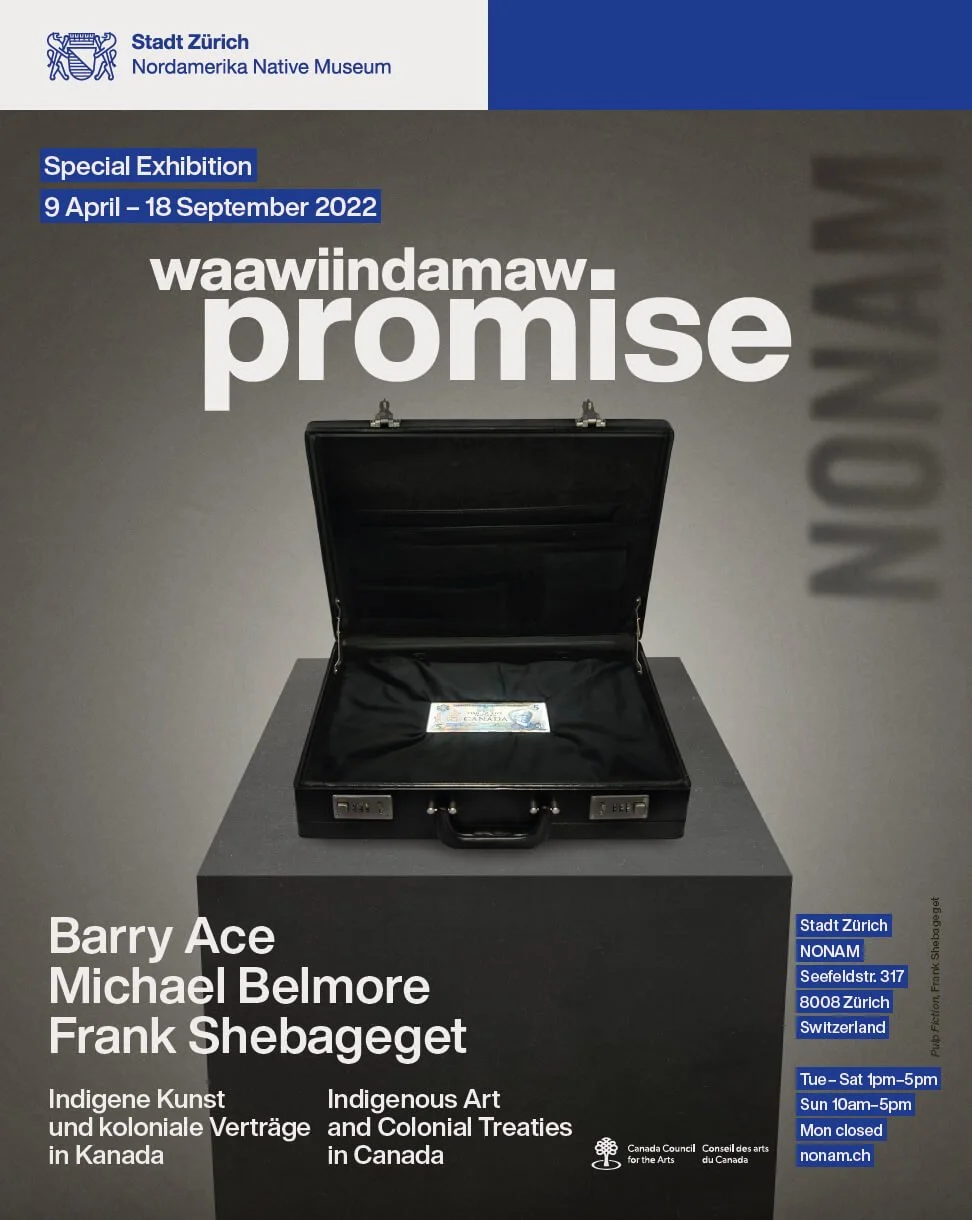Michael Belmore & Frank Shebageget: “WĀWĪNDAMAW – PROMISE” AT NONAM, ZURICH, SWITZERLAND
wāwīndamaw – promise: Indigenous Art and Colonial Treaties in Canada, Nordamerika Native Museum (NONAM), Zurich, Switzerland
April 12 to September 18, 2022
Three indigenous artists from Canada deal with colonial treaties and their consequences. Their works tell of indigenous rights, reserves, resources and land. An exhibition about loss, broken promises and indigenous resistance.
Waawiindamaw means "to promise" in the language of the Anishinaabe First Nations. When was the last time you made a promise or signed a contract? Did your signature have consequences for generations? Colonial treaties promised much and delivered little. Above all, they legitimized the claims of colonial powers to indigenous land. Since the 17th century, colonial powers and First Nations have made treaties in what is now Canada. Early treaties governed trade and diplomacy, war and peace. They were the scene of ceremonies and rituals, in which European and indigenous contractual partners negotiated with one another on an equal footing. Under the pressure of the growing stream of settlers, however, the country and its resources soon became the focus of colonial interest. However, when "land" was mentioned, At best, the same word was negotiated – but the understanding of it and the cultural concepts behind it were fundamentally different. Contracts have become synonymous with broken promises in North America. Their story reflects the ongoing struggle for indigenous rights. Above all, they form the basis of the relationship between indigenous nations and the Canadian state to this day.
In «waawiindamaw. promise», three indigenous artists, Barry Ace, Michael Belmore and Frank Shebagaget are considering contracts. Their works speak of tribal rights, the impact of treaties on First Nations life, and the impact on the land and its resources. For the Indigenous nations of Canada, treaties are one of the most pressing issues of our time, with immediate implications for the future and well-being of their communities and reservations.
